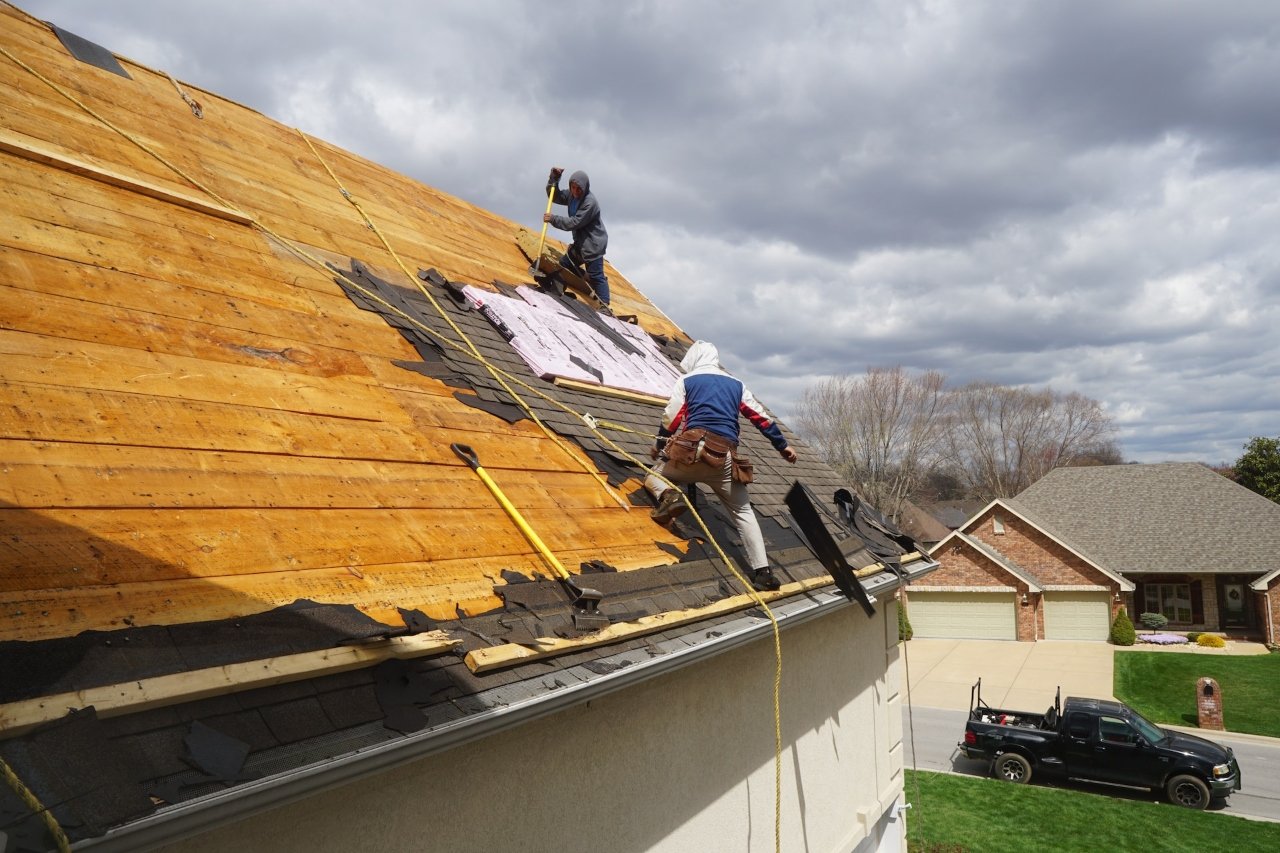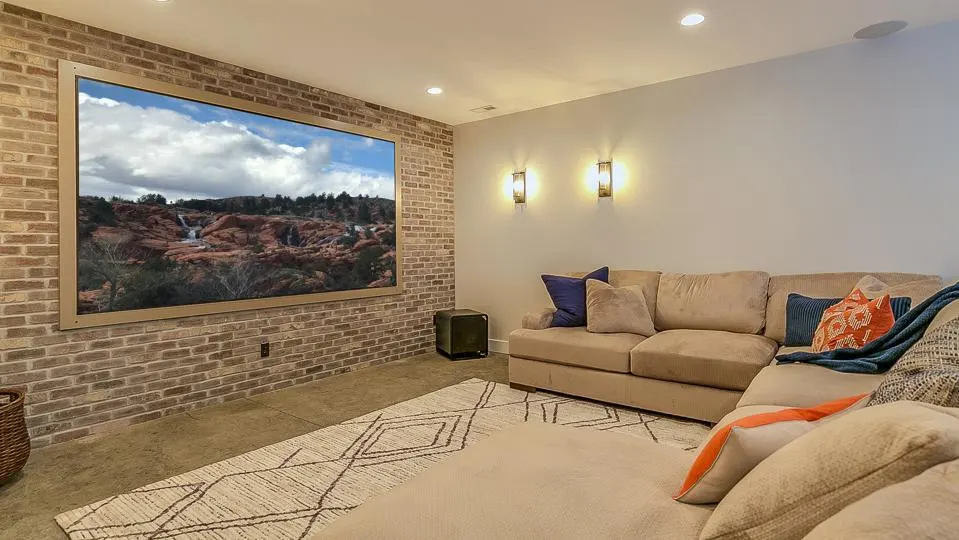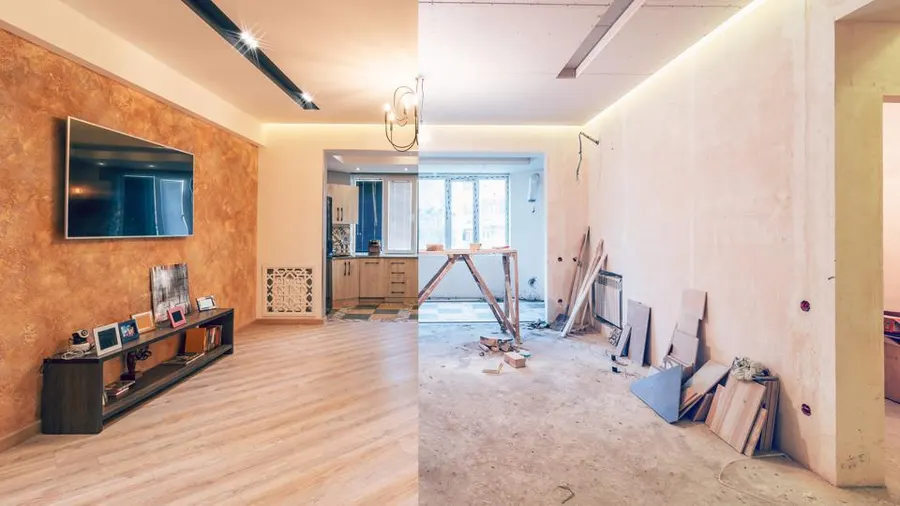Home Improvement
Seating Strategies: Maximising Space and Comfort with the Right Pub Furniture

When it comes to the vibrant world of pub culture, where camaraderie flows as freely as the drinks, the ambiance is everything. It thrives on the sense of community and relaxation it provides to patrons. It’s not just a spot for drinks or meals; it’s a social hub where friends gather, strangers bond, and memories form—introducing the heart of pub ambiance: pub furnishings. More than just functional items, these seats, tables, and booths profoundly influence the pub’s mood and ambiance. This article will delve into effective seating strategies to maximise space and enhance customer satisfaction through thoughtful pub furniture selection.
Understanding The Layouts
Before discussing seating strategies, it’s essential to understand the layout. Is it a cosy corner establishment or a spacious sports bar? Each design presents its own set of challenges and opportunities regarding seating arrangements. By carefully analysing the layout, you can determine the best placement for different types of seating options.
Mixing and Matching
Gone are the days of uniform seating arrangements. Today’s pubs thrive on diversity, both in clientele and seating options. Mixing and matching different types of seating, such as bar stools, booths, and traditional tables, can add visual interest to your space while catering to your patrons’ varied preferences. Experiment with different combinations to find what works best for the atmosphere.
Optimising Space
Space is a precious commodity in any pub, especially during peak hours. For optimal space utilisation while ensuring comfort, explore versatile seating options such as stackable chairs or benches, which can be conveniently rearranged to accommodate varying crowd sizes. Additionally, investing in space-saving furniture, such as foldable tables or wall-mounted seating, can help free up valuable floor space without sacrificing seating capacity.
Creating Intimate Settings
While communal seating has its place in pub culture, creating intimate settings can also enhance the overall dining experience for patrons. Incorporating cosy nooks or secluded booths allows guests to enjoy their meals and conversations in a more private setting, away from the hustle and bustle of the main dining area. These intimate settings can also encourage patrons to linger longer, increasing overall revenue.
Prioritising Comfort
Above all, comfort should be the top priority when selecting pub furniture. Uncomfortable seating can quickly deter patrons from returning to your establishment, no matter how stylish or trendy it may be. Invest in high-quality chairs and sofas with ample padding and ergonomic design to ensure that guests can relax and enjoy their time without discomfort.
Considering Accessibility
Accessibility is another important factor to consider when planning seating arrangements in your pub. Ensure that your seating layout complies with ADA regulations and provides ample space for patrons with mobility aids to navigate comfortably. Additionally, consider the needs of elderly patrons or those with strollers by incorporating easily accessible seating options throughout.
Embracing Outdoor Seating
Outdoor seating can be a game-changer for pubs, especially in regions with favourable weather conditions. Embracing outdoor seating expands your capacity and allows patrons to enjoy al fresco dining and soak up the atmosphere. Purchase durable furniture to endure various weather conditions while maintaining comfort and style.
Adapting to Changing Trends
Finally, staying adaptable and responsive to changing cultural trends is essential. Monitor emerging seating trends and customer preferences and update your furniture accordingly. Whether incorporating sustainable materials, integrating technology into seating designs, or embracing innovative seating concepts, staying ahead of the curve will ensure that your pub remains a popular destination for years to come.
Seating strategies, especially when it comes to pub furniture, play a crucial role in maximising space and comfort. By understanding your layout, mixing and matching seating options, optimising space, creating intimate settings, prioritising comfort, considering accessibility, embracing outdoor seating, and adapting to changing trends, pub owners can create an inviting and enjoyable atmosphere that keeps patrons coming back for more.

Home Improvement
The Elegance of Jasmine Blooms: A Guide to their Beauty and Care

Jasmine, a flowering plant cherished for its fragrant blooms, stands as one of the most beloved plants in the world. From its delicate blossoms to its distinctive aroma, jasmine adds both beauty and elegance to any garden or home. The jasmine plant offers more than just aesthetics; its flowers symbolize purity, beauty, and sensuality, making it a popular choice in gardens, perfumes, and even spiritual practices.
In this comprehensive guide, we will delve into the allure of jasmine blooms, their various species, growth conditions, and how to best care for this extraordinary plant to ensure long-lasting, bountiful blooms. We will also explore the cultural significance of jasmine, as well as its medicinal and aromatic benefits.
Types of Jasmine Plants
There are over 200 species of jasmine, with Jasminum officinale, or common jasmine, being the most widely recognized. However, there are numerous varieties, each with its own unique characteristics and blooming patterns. Let’s explore some of the most notable species:
1. Common Jasmine (Jasminum officinale)
Known for its snow-white flowers and strong scent, common jasmine is a vigorous climber that blooms from summer to autumn. Its flowers are most fragrant in the evening, making it a favorite for nighttime gardens.
2. Arabian Jasmine (Jasminum sambac)
This species is famous for its use in perfumes and teas, particularly in Southeast Asia. The white blooms of Arabian jasmine are highly fragrant and are often used in leis or garlands in India and the Philippines.
3. Winter Jasmine (Jasminum nudiflorum)
As its name suggests, winter jasmine blooms during the colder months, offering bright yellow flowers in early spring. Unlike other jasmines, its flowers are less fragrant, but its ability to bloom in the off-season makes it a wonderful addition to any winter garden.
4. Spanish Jasmine (Jasminum grandiflorum)
Spanish jasmine is highly valued for its role in the production of essential oils. The blooms are large and intensely fragrant, and the plant thrives in warmer climates.
Growing Conditions for Jasmine Blooms
Jasmine is not a particularly demanding plant, but it does require specific conditions to thrive. Understanding the plant’s natural environment will help you provide the best possible care for your jasmine blooms.
1. Sunlight Requirements
Jasmine loves sunlight. Most species prefer full sun to partial shade, meaning they need at least 4-6 hours of direct sunlight daily. However, certain species, such as winter jasmine, tolerate partial shade better than others.
2. Soil Type
A well-draining, slightly acidic soil with a pH range of 6.1 to 7.5 is ideal for jasmine. The plant thrives in loamy or sandy soil types, where drainage is crucial to avoid root rot. Adding organic matter, such as compost or aged manure, can enhance the soil’s fertility, ensuring lush growth and prolific blooming.
3. Watering Needs
Jasmine prefers consistent watering, especially during its active growing season (spring and summer). While it loves moisture, it does not tolerate soggy conditions. Water the plant thoroughly, allowing the soil to dry slightly between waterings. In winter, reduce the watering frequency as the plant enters dormancy.
4. Fertilization
Feeding jasmine with a balanced fertilizer will promote healthy growth and abundant blooms. A 10-10-10 fertilizer applied once every 4 to 6 weeks during the growing season can provide the necessary nutrients. However, avoid over-fertilizing, as this can result in excessive foliage growth with fewer flowers.
Caring for Jasmine Blooms
Proper care will ensure that your jasmine plant continues to bloom season after season. Here are some essential tips for maintaining the health and beauty of jasmine blooms.
1. Pruning
Regular pruning is essential for maintaining the shape and health of the plant. Jasmine plants benefit from light pruning immediately after flowering. Removing spent blooms and trimming back overgrown branches encourages new growth and more flowers in the next blooming cycle. For vining varieties, prune heavily to control size and direct growth.
2. Pests and Diseases
Jasmine is generally resistant to many pests, but it can occasionally suffer from spider mites, aphids, and whiteflies. Regularly check the underside of leaves and use insecticidal soap or neem oil if necessary to control infestations. In terms of diseases, jasmine can be prone to fungal infections such as root rot and powdery mildew. Ensure proper drainage and air circulation to prevent these issues.
3. Supporting Growth
For climbing varieties like common jasmine, providing a trellis or other support structure is essential for the plant’s growth. Train the vines early on by gently tying them to the support, ensuring the plant grows in the desired direction.
4. Overwintering
If you live in a region where temperatures drop below freezing, certain jasmine varieties will need to be overwintered indoors. Bring potted plants inside before the first frost and place them in a sunny location, reducing watering during the winter months. For outdoor plants, applying a thick layer of mulch around the base can help insulate the roots from extreme cold.
Cultural Significance of Jasmine Blooms
Jasmine has long been cherished for its beauty and fragrance, with deep cultural roots in many parts of the world.
1. Symbolism in Different Cultures
In many Asian cultures, jasmine symbolizes love, beauty, and purity. In India, the flowers are used in weddings and religious ceremonies, while in Thailand, jasmine represents motherhood. Meanwhile, in the Middle East, jasmine flowers are often woven into garlands and used to adorn homes during celebrations.
2. Jasmine in Perfumery
Due to its intoxicating fragrance, jasmine has been a key ingredient in the perfume industry for centuries. Jasmine absolute, extracted from the flowers, is often found in high-end perfumes. Its sweet, floral scent adds depth and complexity to many famous fragrances, making it a staple in aromatherapy and luxury perfumes.
3. Medicinal Uses of Jasmine
Jasmine has also been utilized in traditional medicine for its calming and healing properties. Jasmine tea is known for its ability to reduce stress, improve digestion, and enhance mood. Additionally, the essential oils derived from jasmine blooms are believed to have antidepressant and anti-inflammatory effects, making it a valuable plant in natural healing practices.
Conclusion
Jasmine blooms are more than just an aesthetic pleasure; they offer a world of benefits, from their fragrant allure to their cultural and medicinal significance. Whether you are growing jasmine in your garden for its delicate blooms or for its soothing fragrance, the care you provide will ensure that this beautiful plant thrives and continues to enchant.
Frequently Asked Questions about Jasmine Blooms
1. What time of year does jasmine bloom?
Jasmine typically blooms in the spring and summer months. However, some varieties, like Arabian jasmine, can bloom year-round in warmer climates.
2. Can jasmine grow indoors?
Yes, jasmine can grow indoors provided it receives enough sunlight and proper care. Indoor jasmine plants need bright, indirect light and regular watering to thrive.
3. What are the health benefits of jasmine tea?
Jasmine tea offers numerous health benefits, including stress relief, improved digestion, and antioxidant properties that help detoxify the body and boost the immune system.
4. How do I care for a jasmine plant?
To care for a jasmine plant, ensure it is planted in well-drained soil, receives full sunlight or partial shade, and is watered regularly. Jasmine plants also benefit from occasional pruning to encourage healthy growth and flowering.
5. Is jasmine toxic to pets?
Certain species of jasmine, such as Jasminum officinale, are non-toxic to pets. However, some varieties, like star jasmine, may be mildly toxic to cats and dogs. It’s always best to check the specific variety you are growing and keep pets from consuming the plant.
6. How can I use jasmine flowers in cooking?
Jasmine flowers can be used to infuse teas, syrups, and desserts with their subtle fragrance. Jasmine rice, infused with the flower’s aroma, is a staple in many Asian cuisines. Be sure to use edible species of jasmine when cooking.
Home Improvement
Roof Maintenance Tips for a Long-Lasting Home

Key Takeaways
- Regular roof maintenance can extend the lifespan of your roof significantly.
- Understanding different roofing materials will help you make better maintenance decisions.
- Proper cleaning methods and tools are crucial for roof health.
- Periodically inspect for signs of damage like leaks, missing shingles, or mold growth.
- Consult professionals for advanced maintenance needs or extensive repairs.
Table of Contents
- Understanding Roofing Materials
- Importance of Regular Maintenance
- Effective Cleaning Practices
- Inspection for Damage
- When to Seek Professional Help
- Seasonal Maintenance Tips
- Improving Energy Efficiency
- Adopting Sustainable Roofing Practices
Understanding Roofing Materials
The selection of roofing material is pivotal in determining the future needs of your roof. Popular materials include asphalt shingles, renowned for their affordability, and metal roofing, which offers exceptional durability and energy efficiency properties. Asphalt shingles are convenient but may need more frequent maintenance due to their susceptibility to weather conditions. As highlighted by Architectural Digest, metal roofing reflects sunlight effectively, helping manage home temperatures and potentially reducing heating costs. Understanding the pros and cons of these materials aids in making informed choices that align with your long-term home maintenance strategy.
Importance of Regular Maintenance
Regular maintenance is a cornerstone in ensuring the longevity and efficiency of any roof. By incorporating consistent upkeep routines, homeowners can avoid sizable repair costs caused by overlooked minor issues. Tasks such as trimming overhanging branches or monitoring water flow can prevent leaks and moisture problems. Additionally, consistent roof cleaning can curb the growth of moss and algae, which can erode roofing materials. Routine maintenance safeguards the roof and enhances property value and curb appeal, making it a vital aspect of homeownership.
Effective Cleaning Practices
Proper cleaning plays a critical role in maintaining roof health. It’s important to use appropriate cleaning methods, especially for roof and concrete cleaning, to avoid damage. For instance, high-pressure washing might be tempting for its speed, but it can dislodge or crack shingles, leading to more harm than good. Instead, consider using soft washing techniques. Employing gentle cleaning solutions and a low-pressure hose can remove dirt and growth without damaging the roof’s surface. Another vital point is to keep gutters clear since blockages can cause water to pool, leading to leaks and water damage within the home.
Inspection for Damage
Regular roof inspections are essential in identifying potential issues before they become serious concerns. Walk around your property periodically to examine for sagging areas, loose shingles, or visible damage. Pay special attention to areas prone to leaks and drafts, which might arise from gaps in chimneys or vents. In addition to visual inspections, consider engaging professionals for detailed evaluations. These experts can assess structural components and potential weak spots that might not be immediately visible. Staying informed about weather patterns can guide on the best times for inspections, helping thwart emergencies before seasonal changes exacerbate existing issues.
When to Seek Professional Help
Despite best efforts in personal maintenance, professional intervention becomes necessary in certain scenarios. If you notice significant leaks, structural damages, or extensive mold growth, it’s prudent to consult roofing experts. These professionals are equipped with specialized tools and possess the experience to manage complex repairs effectively. They can conduct comprehensive assessments and implement robust solutions that ensure the safety and integrity of your home. Engaging professionals for extensive damage mitigates risks and assures quality repair work, reinforcing your roof’s stability for years.
Seasonal Maintenance Tips
Different seasons present unique challenges when it comes to maintaining roofs. During autumn, falling leaves can accumulate and clog gutters, necessitating timely removal to prevent water pooling and damage. Winter requires preventative actions against ice dams, such as roof rakes or professionally installed heat cables to avert accumulation. Spring is ideal for detailed inspections and repairs after the harsh winter weather. Conversely, summer’s intense heat calls for UV protective coatings to shield against relentless sunlight, which can crack and deteriorate many roofing materials.
Improving Energy Efficiency
Energy efficiency is a growing concern for many homeowners, and your roof plays a significant role. You can dramatically reduce energy consumption by opting for energy-efficient materials and designs, like those incorporating cool roof technologies. These roofs use reflective coatings and materials to deflect more sunlight and absorb less heat, maintaining a comfortable temperature inside the home. Over time, these measures yield a reduction in energy bills and enhance environmental sustainability, contributing positively to the homeowner’s green footprint.
Adopting Sustainable Roofing Practices
As environmental concerns become more pressing, sustainable roofing practices are increasingly gaining traction. Homeowners are encouraged to consider materials like recycled shingles or install a green roof that supports plant life. These efforts contribute to better insulation, reduce urban heat effects, and offer environmental benefits. By incorporating sustainability into roofing, homeowners can diminish environmental impact and increase the long-term viability of their home structures.
Home Improvement
The Hidden Benefits of Upgrading Your Residential Garage Door
Key Takeaways
- Discover how a new garage door can boost your home’s curb appeal and value.
- Learn about the safety and security enhancements modern garage doors provide.
- Understand the energy efficiency advantages of contemporary garage doors.
- Explore the role of technology in improving garage door functionality and convenience.
- Identify the environmental benefits of choosing eco-friendly garage doors.
Your garage door is an integral part of the outside of your house and serves as more than just an entrance. Modern residential garage doors can offer a host of unanticipated advantages that will boost the value, usefulness, security, and aesthetic appeal of your house.
A new garage door can be a game-changer for homeowners, but occasionally they ignore it. It’s not only about replacing a shabby, outdated door; you should also think about investing in the future of your house. Knowing these benefits will enable you to make an informed decision that will serve you well both now and in the future when the time comes to update.
Boosting Curb Appeal and Home Value
One of the most immediate benefits of upgrading your garage door is the boost in curb appeal. A new, stylish garage door can transform the look of your home, making it more attractive to potential buyers. Homes with updated gates and garage doors often sell faster and for higher prices.
Think of your garage door as a canvas. Changing it can be like giving your home a facelift. Whether you opt for a classic design or a modern look, a new garage door can drastically change the first impression of your home. This not only enhances the visual appeal but also contributes to the overall marketability of your property.
Enhanced Safety and Security
Contemporary garage doors are outfitted with cutting-edge security and safety mechanisms. Better locking systems, more robust materials, and even more innovative technology that lets you monitor and operate your garage door from a distance are some examples of these advances. An important goal for many homeowners is to improve their home’s security features.
There is more to home security than just cameras and alarms. A key component of maintaining the security of your house is the garage door. Improvements in this area can shield against possible threats and offer peace of mind. For example, smart sensors can identify unwanted attempts to open the door, and integrated security systems can immediately notify you, giving your house an additional degree of security.
Improving Energy Efficiency
For households, energy efficiency is becoming increasingly important. Better insulation, which lowers energy loss and makes your home warmer in the winter and colder in the summer, is frequently included with new garage doors. This could result in a more comfortable home and lower energy costs.
A practical garage door can serve as a weather barrier. In addition to saving energy, insulated doors help maintain a more constant temperature in nearby spaces like your living room or entryway. This implies that investing in a properly insulated garage door could eventually result in significant energy bill savings, making it a wise economic decision as well.
Technological Advancements
Today’s garage doors are more sophisticated than before. Your life can be more accessible and your home more safe with features like automated systems, sophisticated sensors, and Wi-Fi connectivity. These innovations in technology provide unmatched convenience by enabling you to control your garage door from anywhere at any time using a smartphone.
Imagine being able to check the status of your garage door via an app when you’re miles away or be able to open and close it with a simple voice command. Garage doors are just one example of how technology is enhancing the intelligence and connectivity of homes. These cutting-edge technologies can also be programmed to shut the door automatically at a specific time every night or to work in tandem with home automation systems to create a smooth and adequate living space.
Environmental Benefits
Choosing eco-friendly garage doors can have a positive impact on the environment. Options made from sustainable materials or those with high energy efficiency ratings can reduce your home’s carbon footprint. This is a crucial consideration for environmentally conscious homeowners looking to make a difference.
Selecting doors with remarkable energy-saving features or utilizing recycled materials are two ways to go green with your garage door. It’s a tiny action with significant potential environmental advantages. You’re making a positive impact on the environment by choosing energy-efficient designs and sustainable materials. Furthermore, to ensure that every stage of the garage door’s lifecycle is as environmentally responsible as possible, some eco-friendly garage doors are made to be recyclable when their time comes to an end.
Conclusion
Upgrading your residential garage door is an investment that offers numerous hidden benefits. From increasing your home’s curb appeal and value to improving safety, security, and energy efficiency, the advantages are substantial. Additionally, embracing the latest technological advancements and choosing eco-friendly options can further enhance your home’s functionality and environmental footprint.
In conclusion, the hidden benefits of upgrading your garage door go beyond mere aesthetics. They offer natural, tangible improvements in security, functionality, and environmental responsibility. So, when the time comes to replace your old garage door, consider these benefits to make an informed and beneficial choice for your home.
Home Improvement
5 Benefits of a Regular Home Check-up by a Qualified Professional in Saratoga Springs

Have you ever considered the importance of regular check-ups for your home? Like your health, your home requires routine inspections to ensure everything functions correctly and prevent potential problems from escalating. A regular house inspection by a qualified professional in Saratoga Springs can be the difference between a safe, well-maintained home and costly repairs down the line.
In Saratoga Springs handyman can help you catch minor issues before they become major headaches, save money, and give you peace of mind knowing your home is in top condition. Whether you’re a new owner or have lived in your home for years, these benefits are worth considering.
1. Early Detection of Problems
One of the most significant advantages of scheduling routine check-ups is the early detection of potential problems. A qualified professional can spot issues that may not be visible to the untrained eye, such as structural weaknesses, plumbing leaks, or electrical hazards. Identifying these problems early on can prevent them from becoming more severe and costly to repair.
2. Increased Safety
In Saratoga Springs, a handyman plays a critical role in ensuring the safety of your home. These professionals can help protect you and your family from accidents and injuries by identifying and addressing hazards like loose railings, faulty wiring, or uneven flooring. Regular maintenance and repairs performed by a skilled handyman prevent minor issues from escalating into major problems and ensure that your home remains a safe environment.
3. Enhanced Value
Regular check-ups can significantly enhance your home’s value. A well-maintained house is more appealing to potential buyers and can command a higher selling price if you decide to put it on the market. It keeps your house looking its best, which is crucial for making an excellent first impression on buyers. If you plan to sell your residence, having a history of regular check-ups can reassure buyers that the property has been well-cared for, making it easier to close the sale.
4. Cost Savings in the Long Run
While it may seem counterintuitive, spending on regular check-ups can save you money in the long run. You avoid expensive repairs and replacements by catching minor issues before they become big problems.
- Preventative Maintenance: Addressing minor repairs promptly can prevent more extensive damage, which often comes with a hefty price tag.
- Energy Efficiency: Regular check-ups can identify inefficiencies in your heating, cooling, and insulation systems, leading to lower utility bills.
5. Peace of Mind
One of the most valuable benefits of regular check-ups is their peace of mind. Knowing that your house is in good condition and that potential problems are being addressed before they become serious allows you to enjoy your living space without worry. Regular check-ups allow you to plan for future maintenance and repairs, avoiding the stress of last-minute fixes. Now that you know your abode is in great shape, you can focus on enjoying your living space and spending time with family and friends.
Regular check-ups by a qualified Saratoga Springs professional invest in your property’s safety, value, and longevity. By staying on top of potential issues and maintaining your home’s systems, you can save money, enhance your home’s value, and enjoy peace of mind while your home is well-cared for. Don’t wait until problems arise—schedule regular check-ups to keep your home in top condition.
Home Improvement
Tips For Renovating A Basement

Before starting with the renovation tasks and ideas for making the most of the basement, it is important to keep in mind that it must be carried out by professionals in the sector, which is why at Jensen Pro Construction, we are specialists and provide services in design and renovations of home and basement..
As a tip, we suggest that you clean and leave the place empty, since in this way, the professionals will be able to measure the space and provide more concrete solutions.
Below, we leave you some home decoration tips so that you can turn it into a cozy and stylish basement, making the most of it.
Lighting
As a general rule, natural light in the basement is very scarce, either because there are no windows or they are very small. Whatever the case, you must make the most of this lighting together with optimal home decoration. How can it be done?
- Glass panels. The light passes from one space to another in the basement.
- Mirrors. The light is projected from one point, and we manage to bring it inside.
- Paint in light tones. With this we give more space and luminosity to the room.
- Another option to achieve lighting is with artificial light, specially selected to achieve a cozy atmosphere inside the basement.
Space size
One of the major drawbacks when renovating the basement of the house is its height. The higher the basement, the more comfortable it will be, although, if this is not the case, we could gain height in the following way:
- Excavating to gain meters vertically.
- Adequate selection of furniture: functional and not bulky furniture and accessories.
What Solutions Are There To Avoid It?
- A good ventilation system, combining natural ventilation with machine installation.
- Use insulation and waterproofing on the outside or inside, depending on the case.
Air Conditioning
If you want your basement to be cozy, you must air condition the space. With a heating and air conditioning installation, you will spend long afternoons in comfort without leaving home.
Other Installations
- Depending on the use you give to your basement, some installations or others will be necessary.
- Do you want a bathroom or kitchen? You will need plumbing installations.
- If you decide to install a television or other similar appliance, you will surely need wiring for antennas, wifi…
Ideas For Renovating And Decorating A Basement
At this point, and as a final key to making a decision, we show you some ideas for decorating a basement:
Decoration Of Rustic Or Wine Cellar Style Basements
- If your passion is the rustic style, wine, gastronomy. You have a fabulous space to create a large living room-cellar and enjoy long meals and dinners with essence.
- Including a fireplace would be an extra to make your new living room more rustic, and be the perfect place for winter.
- To have a balanced space with character, the combination of warm-toned walls and vintage-style furniture would be the best choice.
- Although it is a lot of money, it can be the best place to create your wine cellar.
Decorating A Modern Basement
Decorating a modern basement has many aspects, including: turning it into a loft, creating an extra living room or seating area for special occasions, a play area for adults and children, or even making it a cocktail bar.
We are left with the last idea, and that is that turning your basement into a cocktail bar is a very successful idea if you are a fan of cocktails and modern basements. How can we decorate this space?
- A bar with all the details cannot be missing.
- Armchairs and tables to share your drinks.
- You can also include a pool table or a dart board, in the style of a game room.
- Opt for warm tones, instead of light colors.
Small Basement Decoration
A good decoration in small basements, with few square meters, makes the space have that magic that has always been missing. But, how can you use this space? We give you two ideas:
A Home Office
Surely, you have always dreamed of creating your own work space for yourself. Well, it is time to make it a reality.
Decorate your new office as you feel most comfortable, keep in mind that you can spend long hours in this place. We recommend a large desk and a comfortable chair, combined with light tones in the space.
Guest Room
Another idea to decorate a basement, being a perfect alternative, is to convert your basement into a guest room or with children’s decoration for the little ones, and if possible, it can be accompanied by a bathroom.
Again, for the decoration of rooms, light tones are the ones that should predominate, accompanied by functional and minimalist furniture so that the space looks spacious. Cushions, some armchairs, curtains. decoration necessary to create a very chic room.
If you’re thinking about the little ones in the house, go for decorating children’s bedrooms to create a playroom with children’s decor elements along with furniture for rest.
Decorating A Basement Without Windows
Are you a movie fanatic? Then decorating your basement without windows won’t be a problem. We have the transformation for you: A home cinema room.
If you like the cinema, it would be a great idea to incorporate individual seats, although, if you prefer it to be more familiar, you can furnish it with armchairs, poufs, and even large cushions for those who love to sit on the floor. The latter can be a low-cost version if you have little money.
The decoration can be creative, but with basic decorative elements: velvet curtains at the entrance or on a wall, lights near the seats.
Projects For Renovated Basements
After seeing all the tips and ideas about renovated basements, we want to share with you some of our projects for decorating a basement in a home.
Finally, we recommend that you trust a team of professionals, the best materials and a lot of patience when renovating your basement.
You can find all of this at Jensen Pro Construction architecture and interior design studio. We look forward to hearing from you!
Home Improvement
Mitigating Weather Risks: A Comprehensive Guide to Commercial Roof Inspections

Key Takeaways
- Regular commercial roof inspections are crucial for preventing costly damages.
- Learn the essential steps of a thorough roof inspection.
- Understand the benefits of professional inspections versus DIY checks.
- Discover resources to stay updated on industry standards and practices.
Mitigate weather risks with comprehensive commercial roof inspections by conducting regular assessments, especially after severe weather. Check for leaks, structural damage, and drainage issues. Clear debris and ensure gutters are functional. Schedule professional inspections biannually to identify and address potential problems and ensure the roof’s durability and the building’s safety.
Introduction
Inspections of commercial roofs are crucial for preserving a building’s health and safety. These inspections can save businesses thousands of dollars in unexpected repair costs and mitigate potential risks associated with structural damages. A proactive approach to roof maintenance ensures your assets’ longevity and provides a safe environment for everyone inside. Engaging licensed roof inspectors brings expertise that identifies potential issues early on, averting costly repairs and maintaining the integrity of your building. This comprehensive book covers all the essential information regarding commercial roof inspections, arming you with the know-how and resources to support the best possible condition for your roof.
Why Regular Roof Inspections Are Essential
Ignoring minor issues on your commercial roof can lead to significant problems over time. FacilitiesNet claims that routine roof inspections aid in identifying minor damage before it becomes more severe and requires expensive repairs. Weather conditions, such as heavy rain, snow, wind, debris, and natural wear and tear, can all impact the integrity of your roof. Periodic checks are indispensable for detecting these issues early. Proactive roof maintenance extends the life of your roof, reduces liability, ensures the safety of the building’s occupants, and enhances the overall value of your property. You can prevent extensive damage and costly emergency repairs by identifying and addressing concerns promptly.
Critical Components of a Thorough Roof Inspection
- Visual Survey: A comprehensive survey is the first step in a thorough roof inspection. This involves thoroughly examining the roof surface, including shingles, flashing, gutters, and roof edges, to spot obvious signs of damage, such as cracks, blistering, or lifting materials. A visual survey also includes checking for debris accumulation and ensuring that all roofing components are securely fastened. By identifying visible issues early, you can take immediate corrective action to prevent further deterioration.
- Moisture Analysis: Utilizing specialized tools like moisture meters allows inspectors to detect hidden leaks and areas with water accumulation that may not be visible during the visual survey. Moisture analysis plays a critical role in preventing costly structural damage, mold development, and damaged insulation caused by water intrusion. Identifying moisture issues early helps implement targeted repairs and prevent further damage.
- Structural Assessment: Ensuring the roof structure and support systems are intact and secure is another vital component of a thorough inspection. Examining the roof deck, support beams, and other structural components is essential to ensure they can support the roof’s weight and are in good condition. Any structural weakness or damage signs should be addressed immediately to prevent potential roof failure and safety hazards.
- Material Condition: Inspectors evaluate the age and condition of the roofing materials, identifying areas that may need replacement. Over time, roofing materials can degrade due to exposure to the elements, UV radiation, and physical wear. By evaluating the material condition, inspectors can provide recommendations for necessary repairs or replacements to preserve the integrity and performance of the roof.
DIY Vs. Professional Inspections
DIY roof inspections can help identify issues, but professional inspections offer comprehensive roof maintenance. Experts can identify subtle signs of structural distress or moisture infiltration, providing detailed reports and actionable insights for repairs and maintenance. Licensed roof inspectors can also help develop a customized maintenance strategy based on age, materials, and local environmental conditions. This preventive measure ensures the roof stays in excellent shape, lowering the possibility of unforeseen problems and increasing longevity. Combining DIY checks with professional inspections ensures a thorough and reliable roof health assessment.
When to Schedule Your Inspections
Following seasonal changes, scheduled roof inspections are crucial for commercial roofs, especially in spring and fall. Inspectors can assess winter weather damage and prepare the roof for potential storms. Post-storm inspections evaluate immediate damage, such as leaks or structural damage. Regular inspections should be part of an annual maintenance plan to catch developing issues, monitor roof conditions, implement repairs, and make informed decisions about future maintenance and investments. A consistent schedule protects the building’s integrity and avoids unexpected repair costs.
Common Issues Found During Inspections
During commercial roof inspections, several common issues are frequently discovered, including:
- Water intrusion and additional roof damage might result from missing or loose tiles.
- Clogged gutters and downspouts: Blockages that allow water to collect on the roof may cause water damage and leaks.
- Water pools and leaks: Standing water on the roof can indicate drainage issues and potential structural problems.
- Damage from fallen debris: Branches, leaves, and other debris can damage the roof and obstruct drainage systems.
- Mold and mildew growth: Overly wet conditions can cause mold and mildew, harming people’s health and deteriorating roofing materials.
Identifying these issues during inspections allows for timely repairs and maintenance, preventing further damage and ensuring the roof’s longevity. Regular monitoring and prompt action are essential for keeping your commercial roof in optimal condition.
Conclusion
Regular commercial roof inspections are crucial for property safety and durability. Engaging licensed roof inspectors ensures the roof remains in top condition, protecting against weather risks and structural issues. Professional inspections provide detailed reports and insights, aiding in developing a comprehensive maintenance strategy. Regular inspections and timely repairs and maintenance can extend the roof’s lifespan, reduce liability, and enhance property value. Inspections should be prioritized, and possible problems should be resolved quickly to safeguard your investment and the health and safety of building inhabitants.
Home Improvement
The Journey to Homeownership: Tips and Strategies for First-Time Buyers

Buying a home is a significant milestone. For first-time buyers, the journey can seem overwhelming. Whether looking at urban apartments or considering rural housing loans Loganville, GA this guide provides practical tips and strategies to help you navigate the process smoothly. Understanding the fundamentals and preparing adequately can make your home purchasing experience pleasant and successful. This journey involves many steps, from financial assessment to the final move-in preparations, and it’s crucial to have a clear roadmap to follow.
Assessing Your Financial Readiness
Before embarking on the home-buying process, it’s essential to assess your financial readiness. This includes evaluating your savings, income, and current debts. A solid understanding of your financial standing is crucial to determining the type of home you can afford. Reviewing your monthly expenses and ensuring you have a substantial emergency fund is critical to this assessment.
Begin by determining your debt-to-income (DTI) ratio, the portion of your monthly earnings used to cover debts. A reduced DTI ratio can increase your appeal to lenders. Also, make sure you have sufficient savings to pay for three to six months of living costs, which can offer a financial safety net in case of unexpected events related to owning a home.
Understanding Different Loan Options
Various loan options are available for first-time homebuyers. It’s essential to research and understand different types of loans to find the one that best suits your needs. The Consumer Financial Protection Bureau provides a helpful resource that outlines different loan options and their requirements.
Different types of loans, such as conventional, FHA, USDA, and VA, come with distinct qualifying requirements and advantages. Traditional loans usually have stricter requirements about credit scores and down payments, whereas FHA loans are more lenient and, therefore, suitable for new homebuyers. USDA loans are designed for purchasers of rural properties and could provide opportunities for zero down payment. It is crucial to have a good credit score to be approved for a mortgage.
The Importance of a Good Credit Score
It is essential to have a good credit score to obtain approval for a home loan. Lenders use credit scores to assess your financial reliability and determine the interest rates on your loan. A solid credit score can significantly influence your chances of obtaining a reasonable mortgage interest rate, potentially resulting in significant savings over time. Improving your credit score involves:
- Paying your bills on time.
- Reducing your debt levels.
- Check your credit report regularly for errors.
Make sure to keep your credit card balances low compared to your credit limits, as having high balances can hurt your score. Furthermore, it is advisable to refrain from seeking new credit options before applying for a mortgage, as numerous inquiries may negatively impact your credit score.
Budgeting for Your New Home
Developing a budget is an essential part of purchasing a home. This involves factoring in the initial payment, closing fees, relocation costs, and continuous upkeep expenses. A carefully thought-out budget allows you to purchase your new home comfortably without straining your finances. Establish your housing budget, usually around 25-30% of your monthly earnings.
It is essential to consider all costs associated with buying and maintaining a home. For example, closing costs can include loan origination fees, appraisal fees, title insurance, and other expenses, adding up to 2-5% of the home’s purchase price. Additionally, factor in the cost of home insurance, property taxes, and potential homeowners association (HOA) fees. Planning for these expenses upfront will prevent financial strain down the road.
House Hunting Tips
Looking for a house can be both thrilling and overwhelming. Begin by determining what is most important to you: the location, the size, and the amenities. A list distinguishing essential from non-essential items can help you stay focused during a search. Working with a real estate agent to help you find a home that meets your needs and budget is advisable. Be prepared to visit multiple properties and take notes to compare features and prices. Pay attention to the neighborhood, the condition of the property, and any potential red flags, such as signs of water damage or outdated systems. Additionally, consider the property’s proximity to schools, workplaces, and other essential amenities.
Navigating the Mortgage Application Process
Applying for a mortgage involves several steps, from pre-approval to final approval. Understanding each process stage can help you stay organized and avoid common pitfalls. Begin by obtaining pre-approval for a mortgage to grasp your borrowing capability. Collect all required paperwork, such as tax filings, salary receipts, bank records, and IDs. Lenders may comprehensively examine your financial background, including your credit score, work history, and any existing debts. Be ready for this review. Being well-organized and promptly addressing lender requests can speed up the process and improve your approval odds.
Final Steps Before Moving In
Once your mortgage is approved and you’ve closed the deal, there are a few final steps to consider before moving in. These include scheduling a home inspection, reviewing your homeowner’s insurance, and setting up utilities. Taking care of these tasks ensures a smooth transition into your new home.
In a home inspection, an expert will evaluate the state of the property and pinpoint any required fixes. Resolve any concerns with the seller before completing the transaction. Examine your homeowner’s insurance policy to ensure it offers sufficient coverage for your new house. Before moving in, make sure to have the utilities, such as electricity, water, gas, and internet, transferred or installed in advance. Doing a final inspection of the property before moving in to verify that all the agreed-upon repairs have been done will assure you.
Home Improvement
Deck Perfection and Garden Glow: The Essential Guide to Screws, Lighting, and Drainage for Your Outdoor Retreat

As any homeowner knows, creating the perfect outdoor space is not only about the big design elements like landscaping and furniture – it’s the little details that really matter. When it comes to transforming your deck and garden into stylish and functional areas, three essentials stand out: decking screws, outdoor lighting, and drainage. In this comprehensive guide, we’re going to look at how these crucial components come together to create the ultimate outdoor retreat.
Building a Deck That Lasts with the Right Decking Screws
Constructing or renovating a deck is a significant investment, and one that you’d want to last through the erratic Aussie weather. The importance of using the right decking screws can’t be overstated. These humble fasteners are what keeps your deck together, ensuring stability, durability, and safety. High-quality decking screws are specifically designed to resist corrosion, withstand environmental changes, and secure the decking boards to the frame without the risk of popping up or causing splinters.
Choosing the right type of screw involves considering the material of your decking, the climate, and the overall look you aspire to achieve. Stainless steel screws, for instance, are ideal for their resistance to rust and their strength. Moreover, the right screws can blend seamlessly with your decking material, maintaining the aesthetic of your outdoor space.
Landscape Lighting to Enliven Your Garden
As the sun dips below the horizon, it’s outdoor lighting that breathes new life into your garden. Thoughtful lighting arrangements can emphasise garden features, enhance safety, and create a warm ambience for those balmy evenings spent under the stars. From path lights that guide your steps to spotlighting that accentuates your favourite tree, the range of outdoor lighting solutions is vast and varied.
The key to effective outdoor lighting is to strike a balance between style and function. Solar-powered options offer an eco-friendly choice that can also reduce electricity costs. LED lights are another popular choice due to their energy efficiency and long lifespan. No matter which type you choose, the right lighting can make your garden glow and give your outdoor space a magical flair.
Managing Water with Effective Drainage Solutions
Good drainage is critical to maintaining the beauty and usability of your outdoor retreat. Water pooling on your deck or in your garden can lead to a host of problems, including rot, mildew, and the destruction of plants. Implementing a proper drainage system will ensure that water is swiftly and effectively redirected away from structures and plantings.
Incorporating drainage solutions into your outdoor design doesn’t have to be an eyesore. Today’s options include discreet and decorative grates that blend with your garden’s look while preventing water damage and erosion. Moreover, adequate drainage protects your home’s foundation from potential water damage, making it a necessary investment for any homeowner.
Merging Style and Function
The beauty of a well-designed outdoor area is in its ability to merge style with function seamlessly. The right decking screws ensure your deck looks great and stands up to the test of time. Strategic outdoor lighting enhances the mood and extends the usability of your garden into the night. Adequate drainage solutions protect your investment by managing water effectively, preventing costly issues down the line.
To achieve deck perfection and a garden glow, it’s important to do your research and choose quality products that will hold up over time. Look for suppliers who offer a wide range of options and can provide advice tailored to your specific needs. For example, when researching decking screws, consider factors such as the type of timber, the environment, and any additional features like anti-corrosion coatings.
Similarly, when selecting outdoor lighting, think about the spaces you want to illuminate, the atmosphere you aim to create, and the practicalities such as power sources and installation. And, when it comes to drainage, don’t overlook the importance of professional assessment and installation to ensure the best outcome for your space.
Conclusion
Crafting an outdoor haven is an exciting process that can significantly enhance your home’s living space and increase its value. Remember, when planning and implementing your outdoor retreat, pay attention to the details. The right decking screws, outdoor lighting, and drainage solutions will make all the difference, turning your garden deck into a picturesque and practical sanctuary. For homeowners aiming to create an exquisite outdoor environment, these elements are the keys to a deck that’s both perfect in its form and glowingly functional.
Deck Out Your Space
Embarking on your outdoor space transformation requires thoughtful planning and the right materials. Begin with a solid foundation using corrosion-resistant decking screws that will ensure a secure and enduring deck. Add the dimension of beauty and safety with versatile outdoor lighting. And, safeguard your space with effective.
Home Improvement
How to Increase Your Home’s Value Through Remodeling

Key Takeaways:
- Remodeling can significantly increase your home’s value.
- Key projects include kitchen and bathroom renovations and improving curb appeal.
- Proper budgeting and choosing the right contractor are critical for successful remodeling.
Introduction to Home Remodeling
Home remodeling is a strategic approach to enhance your property’s aesthetic appeal, functionality, and overall value. Whether you’re planning to sell soon or want to enjoy a more luxurious living space, investing in remodeling projects can offer substantial returns. Effective planning and execution are crucial, and integrating home remodeling services can ensure that your projects meet the desired standards of quality and efficiency.
Benefits of Remodeling
Remodeling can provide numerous benefits beyond increasing a home’s market value. Updated kitchens and bathrooms can offer better functionality and energy efficiency, which are attractive to potential buyers. Additionally, a well-maintained and modernized home can provide more comfort and satisfaction to its current residents.
Enhanced Aesthetics
One of the most immediate benefits of remodeling is the visual appeal. Modern fixtures, updated cabinets, and fresh paint can transform an outdated space into a contemporary haven. This aesthetic boost can make a lasting impression on potential buyers and neighbors alike.
Improved Functionality
Remodeling offers an opportunity to reconfigure spaces to suit modern lifestyles better. The possibilities are endless, whether it’s adding an island in the kitchen for more counter space or creating an open floor plan.
Top Remodeling Projects to Boost Value
In terms of increasing the value of a property, not all remodeling jobs are made equal. It is believed that the initiatives listed below will yield the highest returns:
Kitchen Renovations
A well-equipped, contemporary kitchen may add substantial value to a house. A new coat of paint, countertops, and energy-efficient appliance upgrades are all excellent places to start.
Bathroom Upgrades
Another important space that purchasers pay attention to is bathrooms. Modest renovations like new fixtures or larger overhauls like enlarging the shower or installing a second sink can significantly impact.
Improving Curb Appeal
First impressions count, and the exterior of your home is the first thing potential buyers see. New front doors, paint, and landscaping can improve curb appeal and create the mood for the entire property.
Budgeting and Planning
A strong strategy and budget are essential for any renovation project. Unexpected expenses and project delays can be avoided by being clear about your goals and your spending limit.
Setting a Budget
Your budget will determine the scope of your remodeling projects. Prioritizing projects with the best return on investment and keeping room for unexpected costs are crucial.
Creating a Timeline
A well-defined timeline is as crucial as budgeting. Timelines should account for potential delays and ensure that projects stay within an acceptable timeframe. Efficient planning helps keep everything on track and within budget.
Choosing the Right Contractor
Hiring a professional contractor can make or break your remodeling project. Choosing someone with experience, good reviews, and a portfolio of previous work that aligns with your vision is vital. Proper vetting often includes checking references and credentials and discussing the project in depth to ensure clear communication and realistic expectations.
According to This Old House, interviewing multiple contractors and getting detailed bids can help you make an informed decision.
Conclusion
Remodeling is an excellent investment in enhancing your house’s comfort, functionality, and value. Concentrating on high-return tasks, clearly defining your budget, and hiring the best contractor can ensure that your renovation experience is profitable now and in the future.
Home Improvement
A Guide to Creating a Bright and Eco-Friendly Bathroom with Interior Designers London

In the realm of interior design, the bathroom has evolved from a purely functional space to a luxurious sanctuary within the home. Central to this transformation is the bathtub, a fixture that epitomises relaxation, elegance, and style. This article delves into the importance of bathtubs in the bathroom interior, exploring their types, modern and stylish features, how to select and use them, and the styles they seamlessly fit into. With insights from Interior Designers London, we’ll uncover how bathtubs can elevate any bathroom to new heights of sophistication.
The Importance of Bathtubs in Bathroom Interiors
Bathtubs have become more than just vessels for bathing; they are now symbols of luxury and personal retreat. A well-chosen bathtub can serve as the focal point of a bathroom, offering a place of relaxation and tranquillity. For many homeowners, the bathtub represents an escape from the daily grind, where they can unwind and rejuvenate. The right bathtub not only enhances the aesthetic appeal of the bathroom but also contributes significantly to the overall ambience and functionality of the space.
Types of Bathtubs
Understanding the various types of bathtubs available is crucial in selecting the right one for your bathroom. Here are some popular options:
- Freestanding Bathtubs: These bathtubs stand alone and can be placed anywhere in the bathroom. They are often seen as statement piece due to their sculptural qualities. Interior Designers London frequently recommend freestanding tubs for their versatility and elegance.
- Alcove Bathtubs: These are the most common type, designed to fit into a three-walled enclosure. They are practical and space-efficient, making them ideal for smaller bathrooms.
- Drop-In Bathtubs: These tubs are installed into a pre-built deck or enclosure, providing a seamless look. They offer flexibility in design and can be customised to match the bathroom’s décor.
- Corner Bathtubs: As the name suggests, these tubs are designed to fit into a corner, maximising floor space. They are perfect for bathrooms where space optimisation is essential.
- Clawfoot Bathtubs: A timeless classic, clawfoot tubs are freestanding and supported by four legs. They add a touch of vintage charm to any bathroom.
Modern and Stylish Features
Modern bathtubs come with a plethora of features that enhance both functionality and aesthetics. Here are some key features to consider:
- Ergonomic Design: Modern bathtubs are designed with comfort in mind, featuring contoured shapes that support the body and provide a relaxing experience.
- Hydrotherapy Jets: Many contemporary bathtubs come with built-in jets that offer a spa-like experience, helping to relieve muscle tension and stress.
- Advanced Materials: From acrylic and fibreglass to cast iron and stone resin, the materials used in modern bathtubs are both durable and stylish. Interior Designers London often emphasise the importance of choosing materials that complement the overall design of the bathroom.
- Smart Technology: Some bathtubs are equipped with smart technology, such as temperature control, mood lighting, and integrated sound systems, elevating the bathing experience to a new level.
How to Choose the Right Bathtub
Selecting the perfect bathtub involves considering several factors:
- Space and Layout: Measure your bathroom to determine the available space for the bathtub. Consider the layout and ensure the tub fits harmoniously within the existing design.
- Personal Preferences: Think about how you intend to use the bathtub. If you prefer long, relaxing soaks, opt for a deeper tub. For those who enjoy hydrotherapy, a bathtub with jets is ideal.
- Aesthetics: The bathtub should complement the bathroom’s style and colour scheme. Interior Designers London recommends choosing a tub that acts as a cohesive element within the overall design.
- Budget: Bathtubs come in a wide range of prices. Set a budget and explore options within that range, keeping in mind the importance of quality and durability.
How to Use a Bathtub as a Design Element
A bathtub can be much more than a utilitarian fixture; it can serve as a stunning design element in your bathroom. Here’s how:
- Focal Point: Position the bathtub as the centrepiece of the bathroom. A freestanding tub, for instance, can be placed in the centre of the room or near a large window to create a dramatic effect.
- Complementary Fixtures: Choose fixtures and fittings that enhance the bathtub’s appeal. For example, a vintage clawfoot tub pairs beautifully with classic brass faucets.
- Surrounding Décor: Use tiles, lighting, and accessories to frame the bathtub and create a cohesive look. Soft lighting and elegant tile work can transform the bathing area into a serene retreat.
Styles and Seamless Integration
Bathtubs can seamlessly fit into various bathroom styles, adding character and charm. Here are some popular styles:
- Modern Minimalist: Clean lines, neutral colours, and sleek materials define this style. A freestanding tub with a minimalist design can serve as the perfect addition to a modern bathroom.
- Classic Elegance: For a timeless look, opt for a clawfoot tub paired with traditional fixtures and a monochromatic colour scheme. Interior Designers London often use this style to evoke a sense of luxury and refinement.
- Rustic Charm: Incorporate natural materials like wood and stone to create a rustic bathroom. A stone resin bathtub can enhance the earthy, organic feel of the space.
- Industrial Chic: Exposed pipes, metal fixtures, and concrete elements characterise this style. A sleek, freestanding tub can add a touch of sophistication to an industrial-themed bathroom.
- Eclectic Mix: Combine different styles and elements to create a unique and personalised bathroom. A vibrant, colourful bathtub can act as a statement piece in an eclectic design.
Practical Tips for Seamless Integration
- Balance and Proportion: Ensure the bathtub fits well within the bathroom’s dimensions. It should neither overwhelm the space nor appear too small.
- Consistent Theme: Maintain a consistent theme throughout the bathroom. The bathtub, fixtures, and accessories should all align with the chosen style.
- Functional Layout: Plan the bathroom layout to ensure easy access and functionality. The bathtub should be easily accessible and positioned in a way that maximises space.
- Lighting: Use lighting to highlight the bathtub. Soft, ambient lighting can create a relaxing atmosphere, while accent lighting can draw attention to the bathtub as a focal point.
- Personal Touches: Add personal touches such as candles, plants, and artwork to enhance the overall ambience. Interior Designers London suggest incorporating elements that reflect your personality and taste.
The bathtub plays a crucial role in the interior design of a bathroom, offering both practical benefits and aesthetic value. Whether you prefer the elegance of a clawfoot tub or the modern appeal of a freestanding bathtub, there are countless options to suit your style and needs. By understanding the different types of bathtubs, exploring modern features, and considering the insights of Interior Designers London, you can select the perfect bathtub that transforms your bathroom into a luxurious sanctuary. Embrace the potential of this essential fixture and create a space that not only meets your functional needs but also provides a haven of relaxation and beauty.
-

 Health1 year ago
Health1 year agoGorgeous – Definition, Meaning & Synonyms
-

 News1 year ago
News1 year agoIs Ofleaked.net Legit or Scam?
-

 Life Style1 year ago
Life Style1 year agoShould I Consolidate My Debt?
-

 Business1 year ago
Business1 year agoUncovering кинокрадко: The Dark Side of Film Piracy
-

 Tech1 year ago
Tech1 year agoGreenbits: Revolutionizing Sustainable Agriculture
-

 Tech3 months ago
Tech3 months agoGrand Central Dispatch (GCD) in Swift: A Complete Guide
-

 Tech1 year ago
Tech1 year agoGEEKZILLA.TECH HONOR MAGIC 5 PRO REVIEW
-

 Life Style1 year ago
Life Style1 year agoA Comprehensive Guide to OpenHousePerth.net Insurance